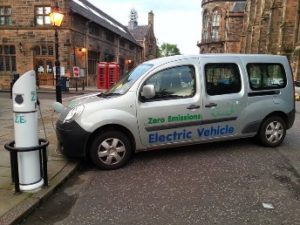The transition to New Energy Vehicles
Editor

In a Facebook posting on 15 September 2019, Andreas Bimba made the following comments:
Germany
Germany’s current leaders and the German automotive industry seem to have failed to appreciate the urgency of the needed transition to New Energy Vehicles as well as the need for vastly improved public transport infrastructure and low energy transport solutions such as bicycles, walking and improved urban design.
Germany’s neoliberal corporate led governments have also imposed fiscal austerity on themselves and on all of Europe through their control of the EU bureaucracy, that has led to the neglect of important infrastructure spending throughout Europe with ongoing mass unemployment, and especially youth unemployment. The Euro common currency zone has also locked in the economic advantage of the major
existing players, such as car manufacturing centred in Germany, leading to economic decline for the South and also for much of the rest of Europe. [1]
Volkswagen is leading the EV revolution in Germany but still lags Tesla and the Japanese, Korean and Chinese manufacturers by a significant margin [2]
China
Meanwhile in China change happens at lightning speed, capital for promising areas is plentiful and government backing is strong.
The Chinese national government restricts vehicle imports and along with regional and city governments provides a comprehensive range of support measures such as subsidies, appropriate higher education, R&D support, fostering of industry clusters, quotas and regulations to develop their automotive industry which is now the world’s largest and most importantly the largest in the area of new-energy vehicles. In fact it is now Chinese national government policy to flat line conventional vehicle production and to ensure all market growth is met by new-energy vehicles. Reductions in air pollution, green-house gas emissions, and the dependence on imported oil along with huge export potential are all major drivers of this transition.
“China already leads globally in EV sales, passing the U.S. in 2015. Sales of new-energy vehicles, or NEVs (EVs, plug-in hybrids, and fuel-cell vehicles). It topped 700,000 units in 2017 and one million in 2018, said Xu Haidong, the assistant secretary-general of the China Association of Automobile Manufacturers. Almost all those cars are Chinese brands. The government has set a target of 7 million vehicles by 2025. To reach that goal, it’s doling out subsidies and tightening regulations around fossil- fuel cars.”
“From 2009 through 2015, the government spent 59.1 billion yuan (~A$12 billion) financing purchases of NEVs. For purchases in 2016 and 2017 it set aside about 83 billion yuan (~A$17 billion), figures Cui Dongshu, secretary- general of the China Passenger Car Association. To boost demand, China gives a 10 percent tax rebate to buyers of NEVs.”
The BNEF Future of Energy APAC Summit was held on November 28-29, 2017 in Shanghai, and there are some applicable conference videos [3].
Colin McKerracher of Bloomberg New Energy Finance gave a presentation in Norway [4].
Also relevant is a graph of ICE (Internal combustion engine) and NEV (New- energy vehicle) vehicle sales in China, including projections [5]:
Australia
Australia would be the worst example of a country where the foundations of a modern automotive manufacturing industry existed but were then discard- ed later (a few short years ago) by a corrupt political class dominated by the malevolent fossil-fuel-exporting kleptocracy to keep the value of the dollar low and thereby help with their profitability (IPA policy number 30 of the 75 point ‘Be Like Gough’ list). This is part of their broader desire for a minimum government and multinational-corporation- dominated Laissez-faire libertarianist nation, and world. Australia could have been a leading nation in the transition to environmental sustainability but is now on track to be one of the last, with the foreign suppliers providing nearly all of this country’s needs as it descends further into stagnation and rising poverty.
The reality is that a central-government- led policy framework is essential to make such substantial changes possible in the time frame available and to maximise the benefits and to moderate the costs.
“If we just sit back and wait then we will face major problems, and I think we are seeing the first signs of those problems today.” [6]
It is not generally known that the federal Labor Party and the Australian Greens both had the makings of a plan to transition to New Energy Vehicles and to establish a local manufacturing industry for batteries and NEV’s, during the last May 2019 federal election campaign: [7][8]
- https://www.youtube.com/watch?v=hcXjVxaKzv4
- https://www.businessinsider.com/volkswagen-credits-elon-m…//
- https://about.bnef.com/…/event/shanghai/shanghai-highlights/
- https://m.youtube.com/watch?v=JQUljH-PBi0
- (a) https://about.bnef.com/…/china-expects-car-sales-growth-el…/(b) https://about.bnef.com/…/beijings-electric-car-push-could-…/
- https://ipa.org.au/…/be-like-gough-75-radical-ideas-to-tran…
- https://www.facebook.com/andreas.bimba/posts/1193034797530395
- https://greens.org.au/sites/default/files/2019-04





























